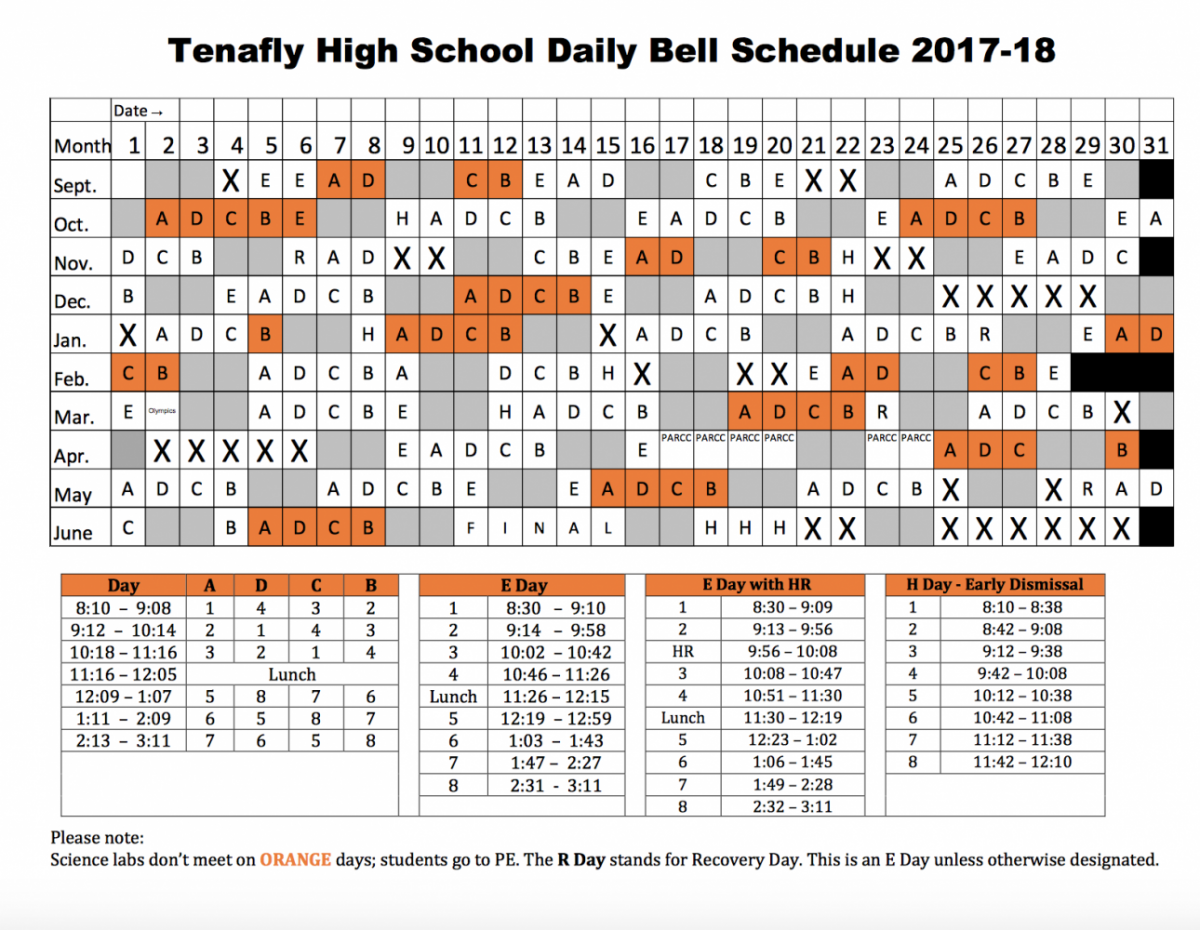Block Scheduling: A Blessing or a Curse?
October 2, 2017
The school has started the 2017-2018 year with many new changes. New teachers, new offices, new students. But the change everyone is still getting used to is the new block schedule.
The block schedule has fewer class meetings each day, but longer class time. It was implemented with the goal of allowing students to receive more instructional time and less stress. It is not like the traditional schedule the school has had since it opened. The block schedule allows students to have six classes a day, except on E days, where students have all eight classes. The old schedule had nine periods a day, one of them being lunch. A study by Carl Glickman, a University of Georgia professor, found that students have overall gotten higher grades and less stress with the block schedule at other schools.
A major concern about the block scheduling is if it’s really effective or not. The block schedule was given so that students can have more time to do their homework and catch up on work during the days they don’t have a certain class. But this is not always the case. “If the teachers make the assignment due on Friday, I will probably forget about it and start it on Thursday,” Catherine Ahn (‘20) said. Because of the block schedule, she said, teachers become even more strict when grading assignments, since the students are given more time to complete them. Most students take this privilege for granted.
Students who procrastinate are indifferent about the new change, but students who do their tasks on time have a great advantage. The majority of high schoolers procrastinate and do not take advantage of this extra time. However, there are some productive students who appreciate this advantage in the schedule. “It depends on the other homework I have and on the mood I’m in,” said Ashley Jeong, a sophomore at Northern Valley Demarest, a school also using block scheduling. “If I feel like it, I’ll do my homework on the night it’s assigned. Other days, I’m just lazy or I’m busy because I have plans.” The schedule lets students decide what to do with their extra time. There can be different outcomes with this new addition.
With every change, there are disadvantages. In this school, a big worry for most students is the lunch set-up. The gym and the lunchroom have been opened for all four grades during the one-period lunch. But these spaces cannot accommodate the 1,200 plus students at the school. “Lunch is the hardest with the block schedule,” said Catherine Ahn. “Both lunchrooms are really crowded, and I know some people can’t even eat lunch because they are spending the whole period waiting on the lunch line to buy school lunch.” This is actually the same case for other schools. “There is nowhere to sit for lunch,” said Ashley Jeong when asked if there were any difficulties in the block schedule at NVD. “Only juniors and seniors are allowed to eat in the lunchroom. Sophomores and freshmen have to sit in the gym.” Judging from both schools’ difficulties with the schedule, it seems as though the lunch situation cannot be fixed unless the schools decide to build a larger lunchroom.
Both freshmen and new students are adjusting to the new schedule, too. “The adjustment to the school was annoying because I used to be able to memorize the classes, but now I have to check my schedule daily,” said Norhan Zouak (‘21), a new student at the school. In addition to getting used to a new school and unfamiliar people, new students have to get used to the confusing schedule.
Will the new block schedule prove to live up to the results of Glickman’s study? It’s early still, so only time will tell.

















































































































































